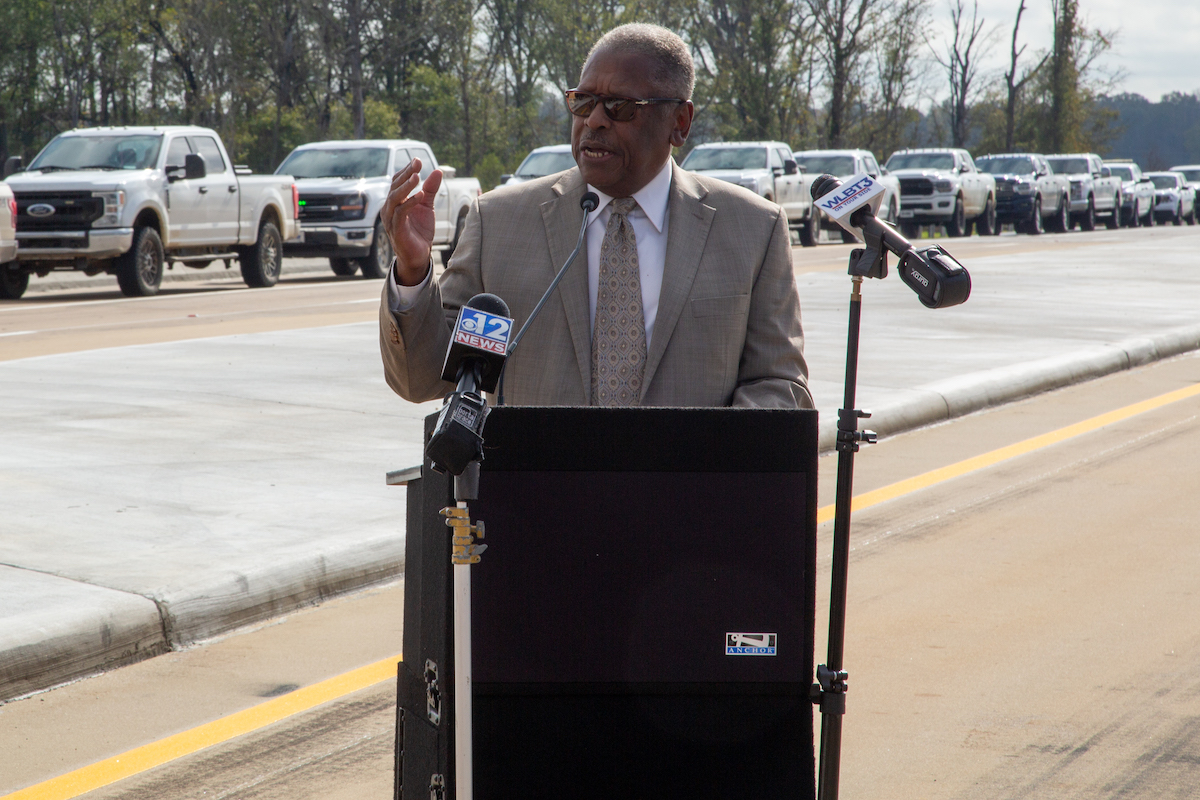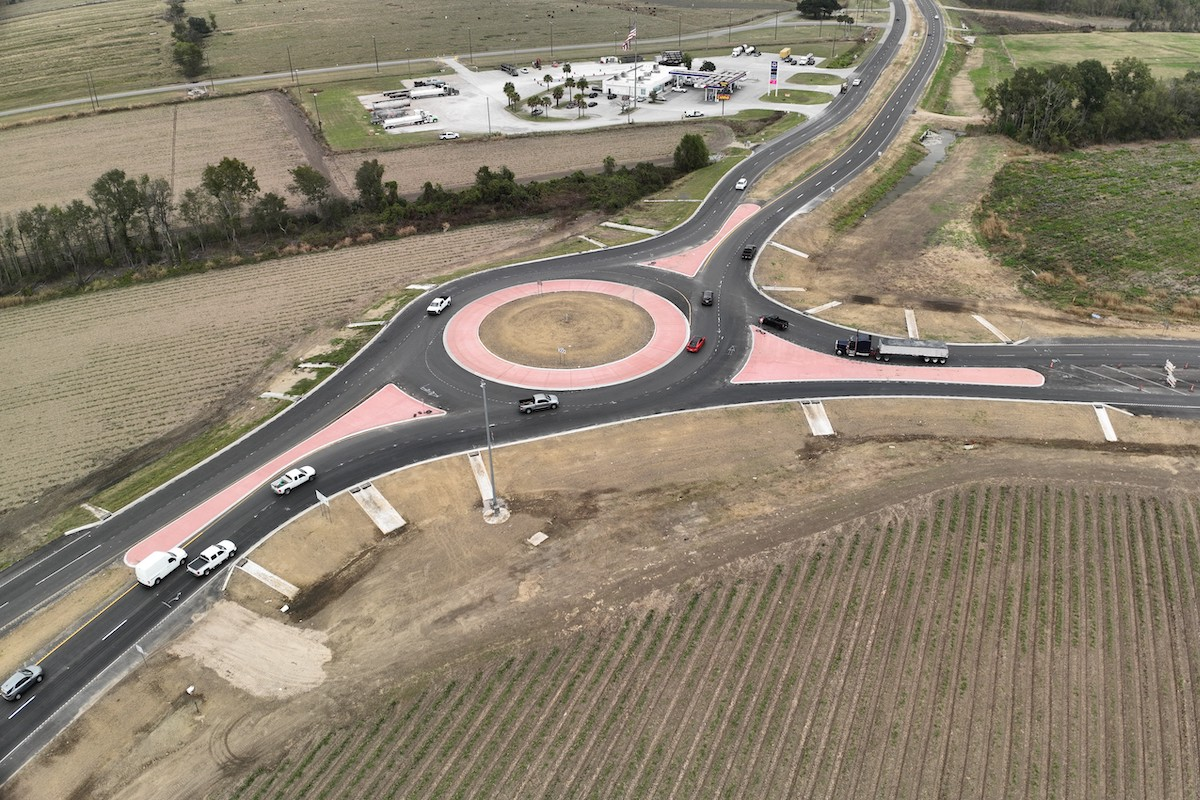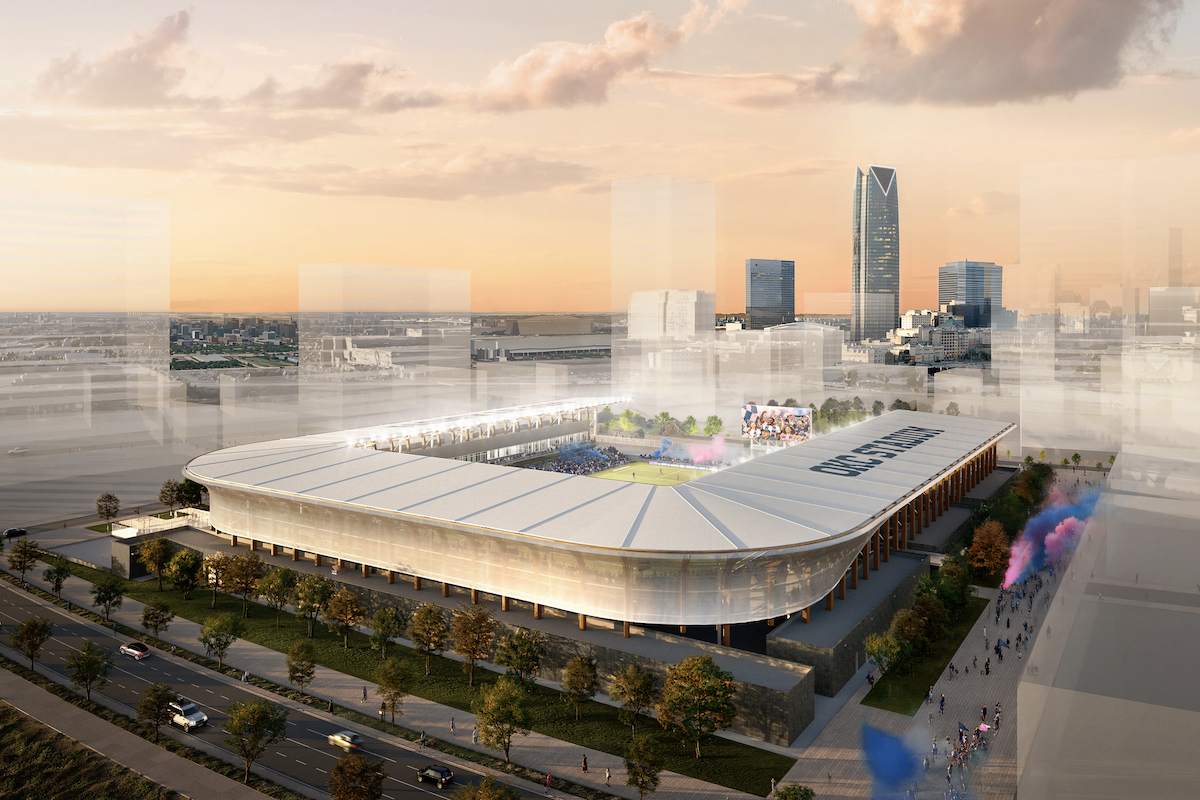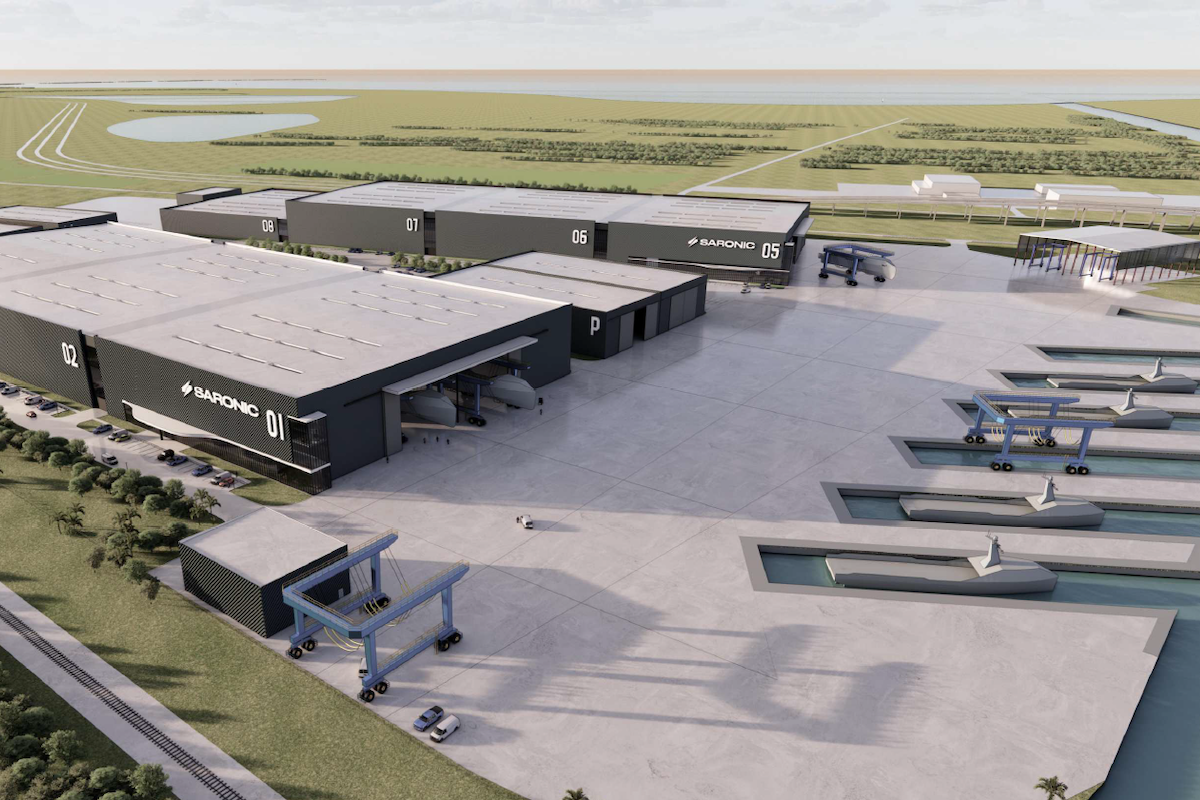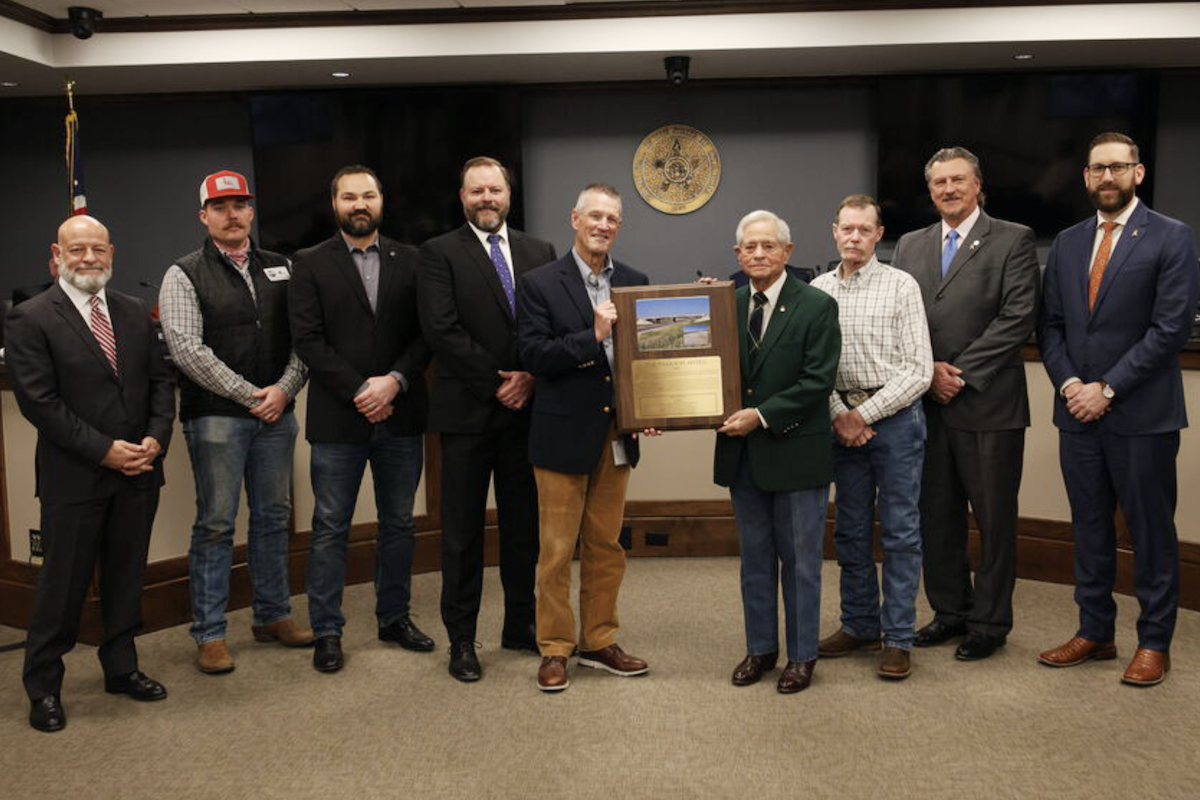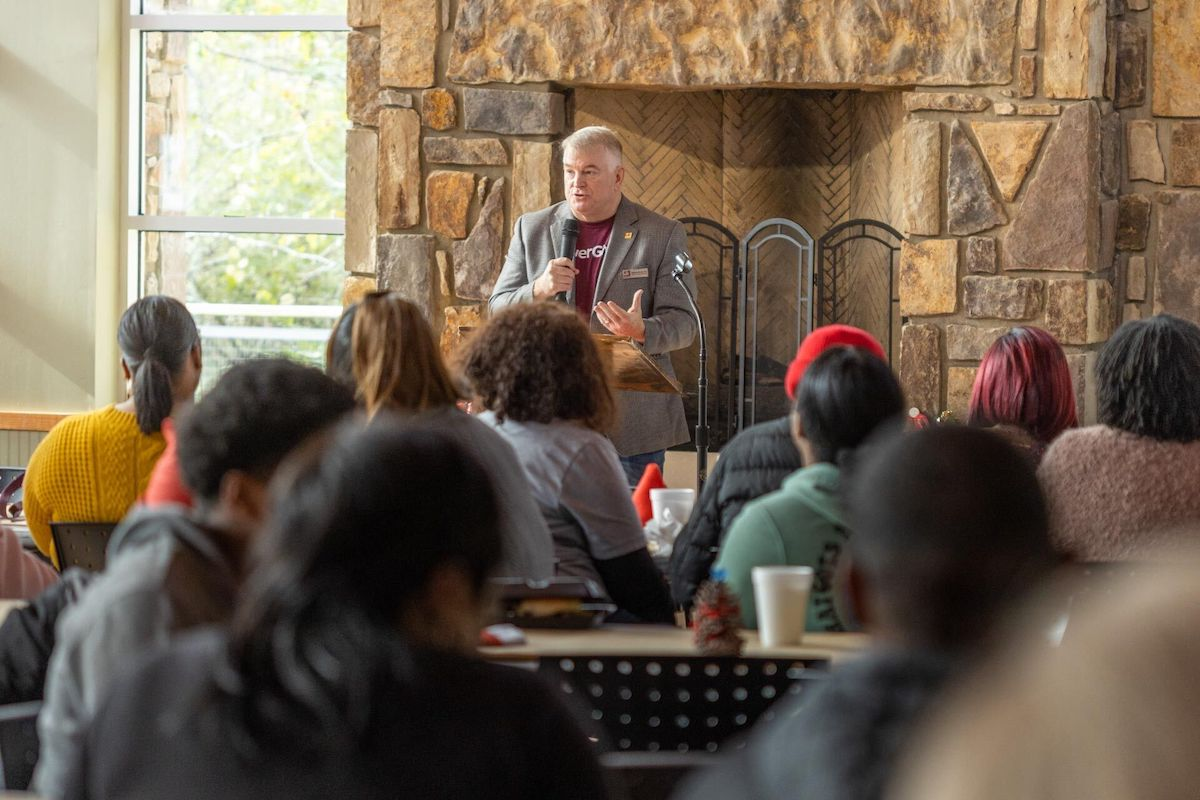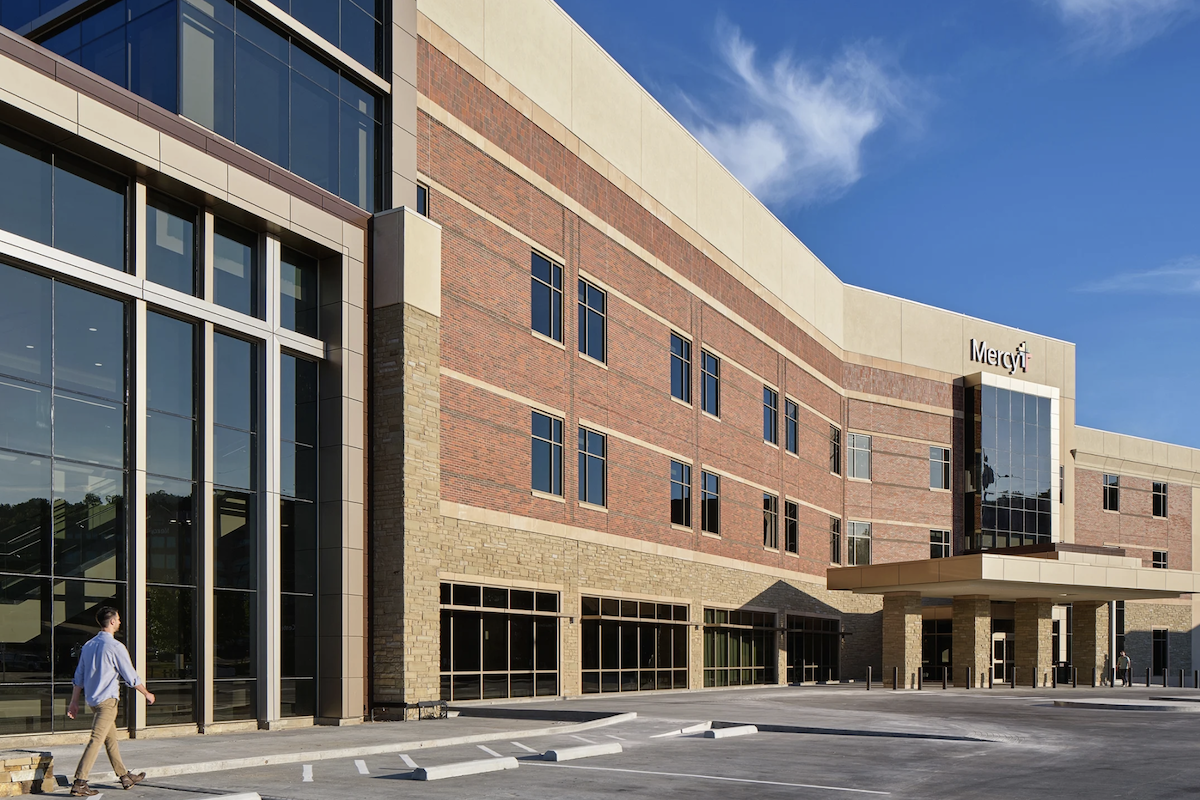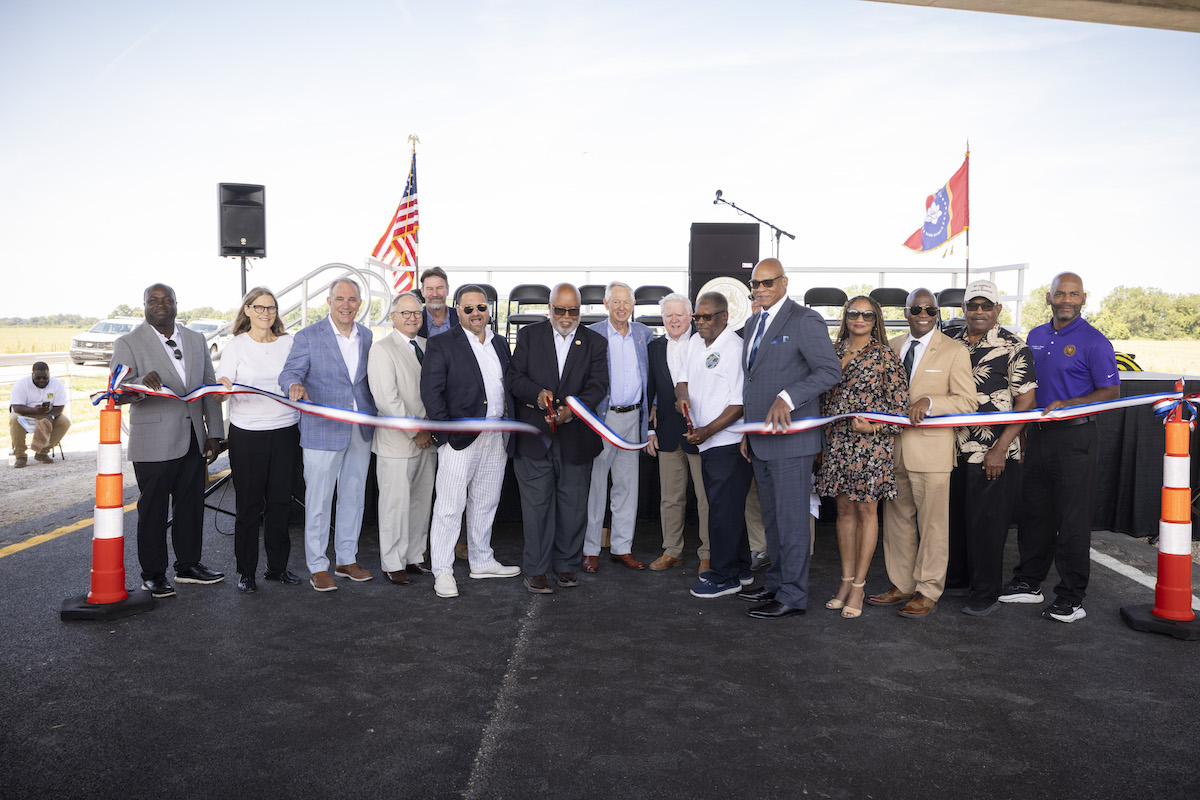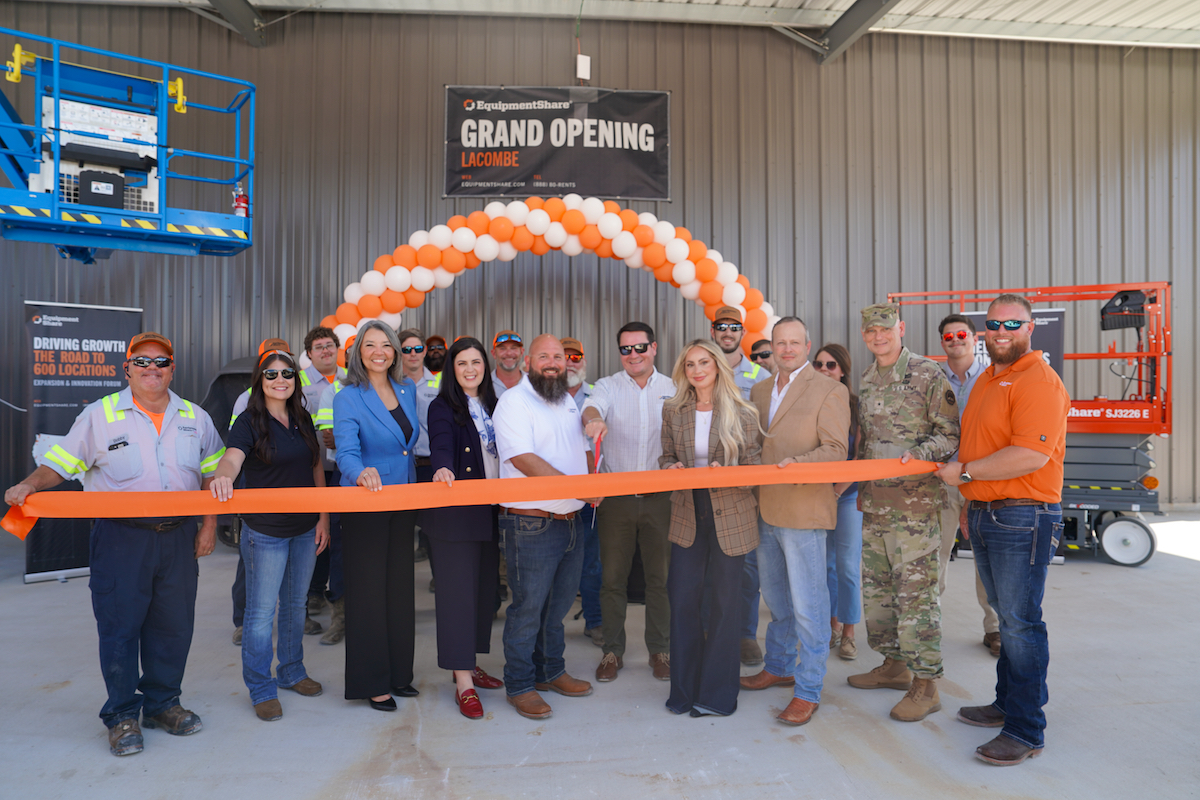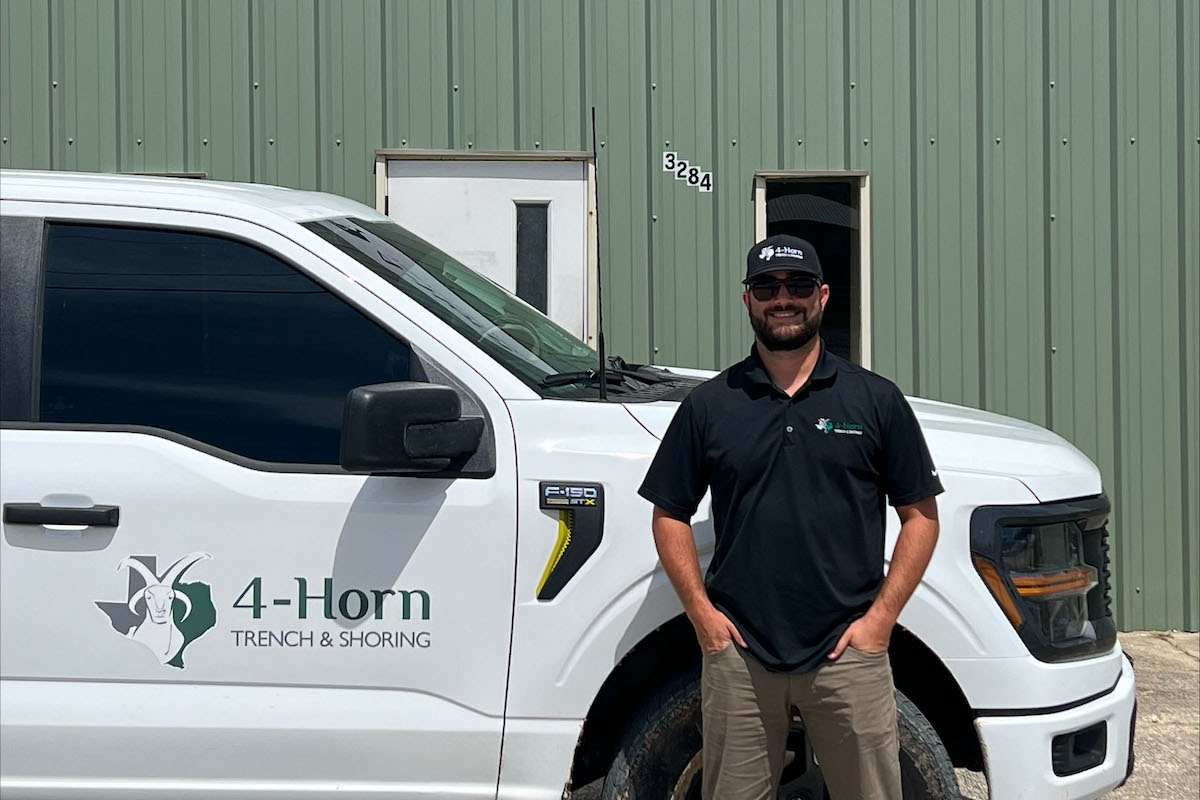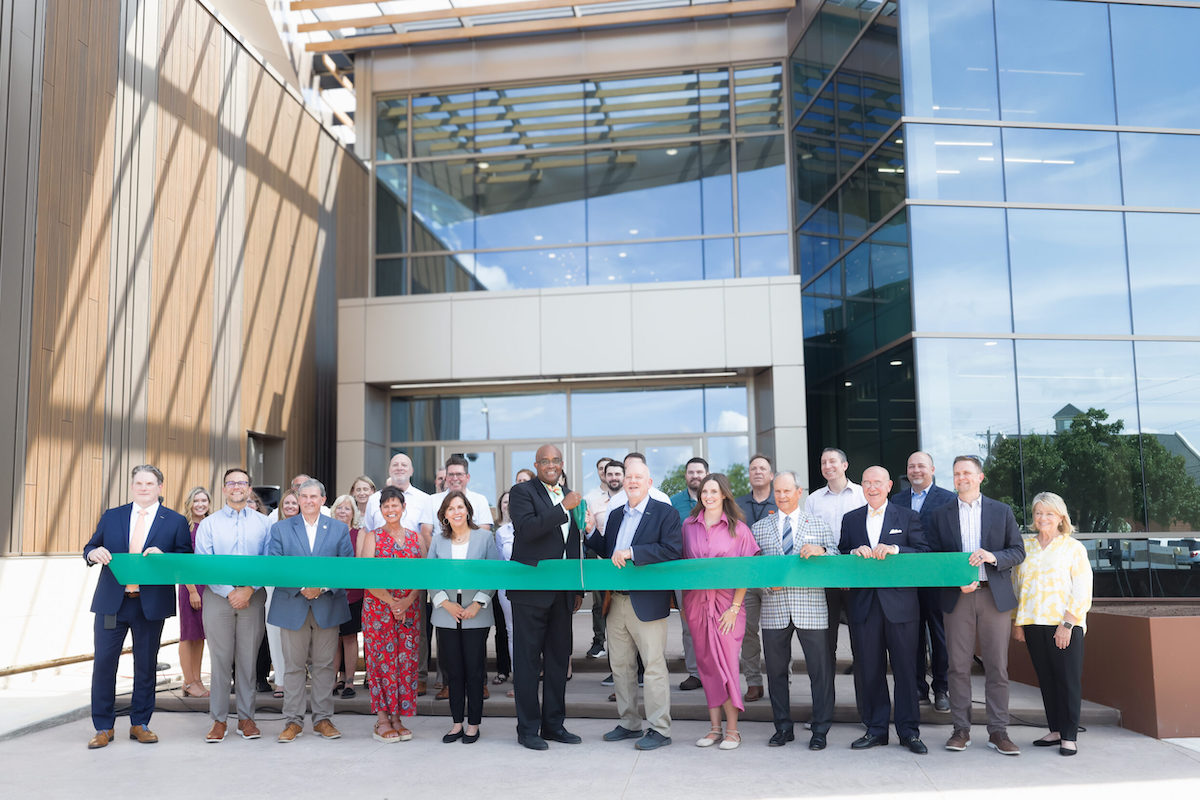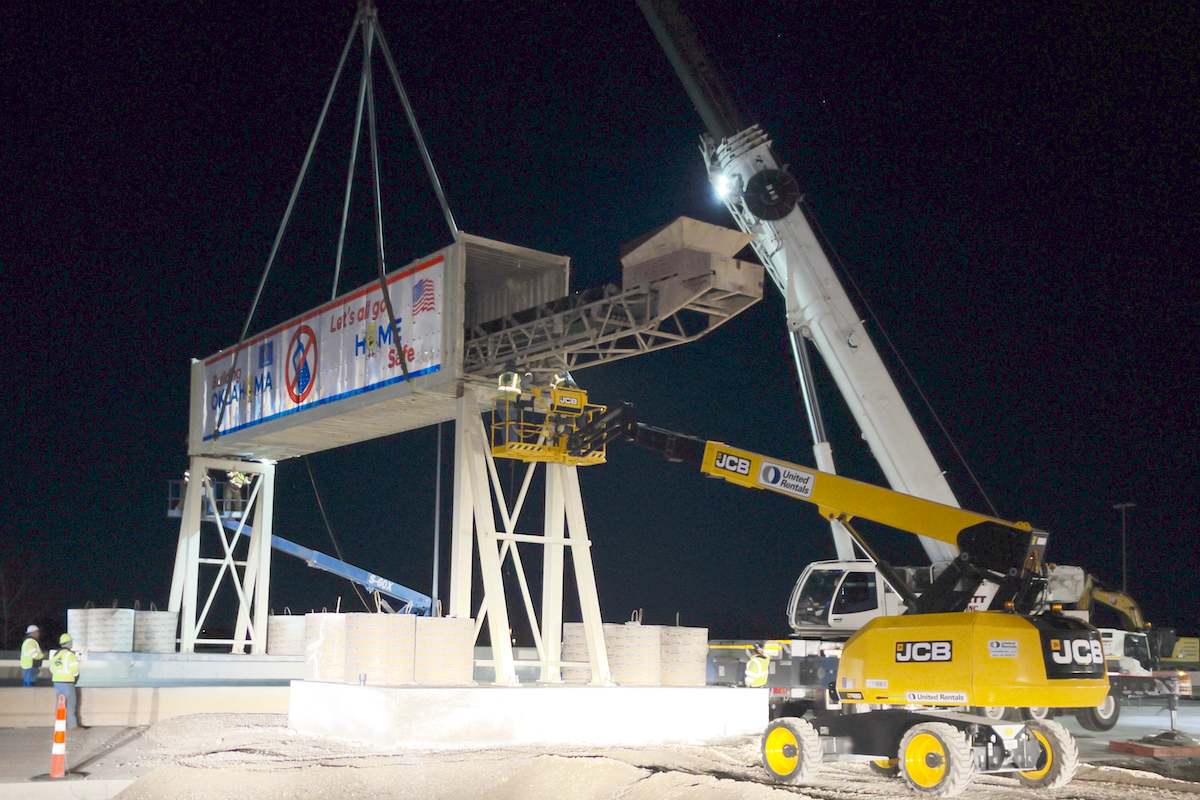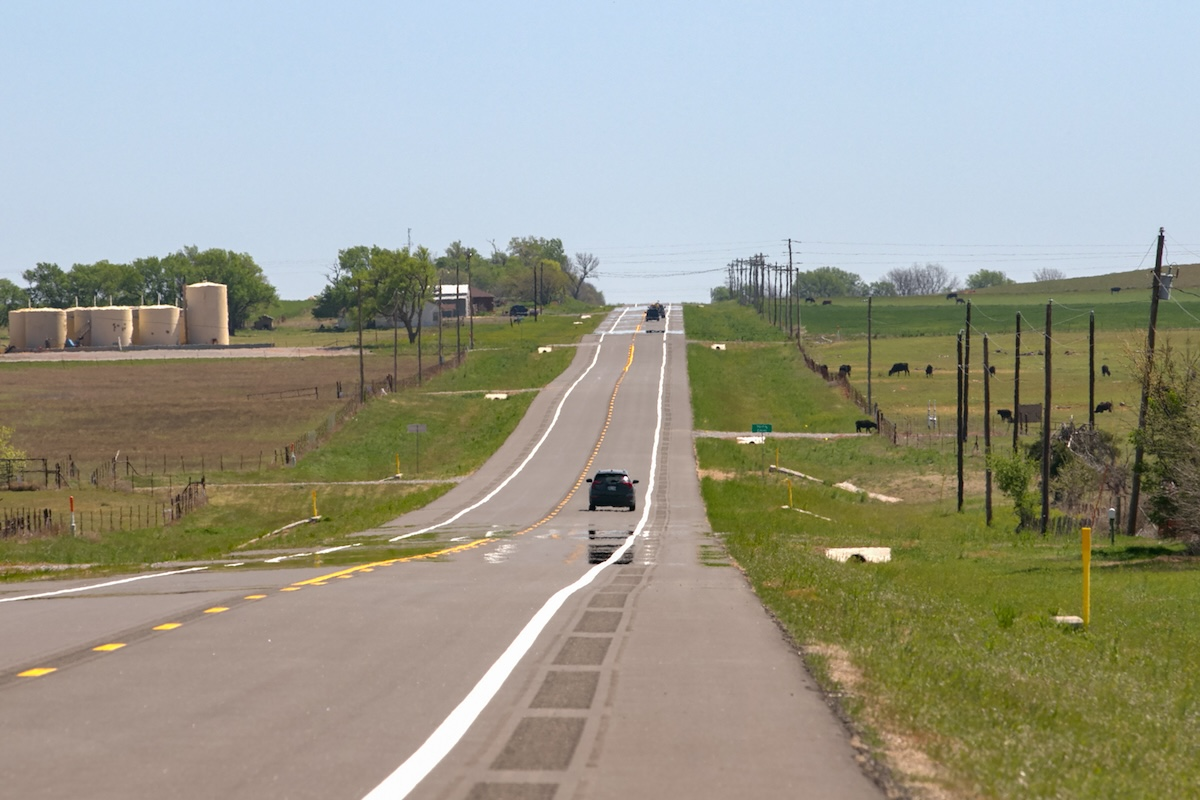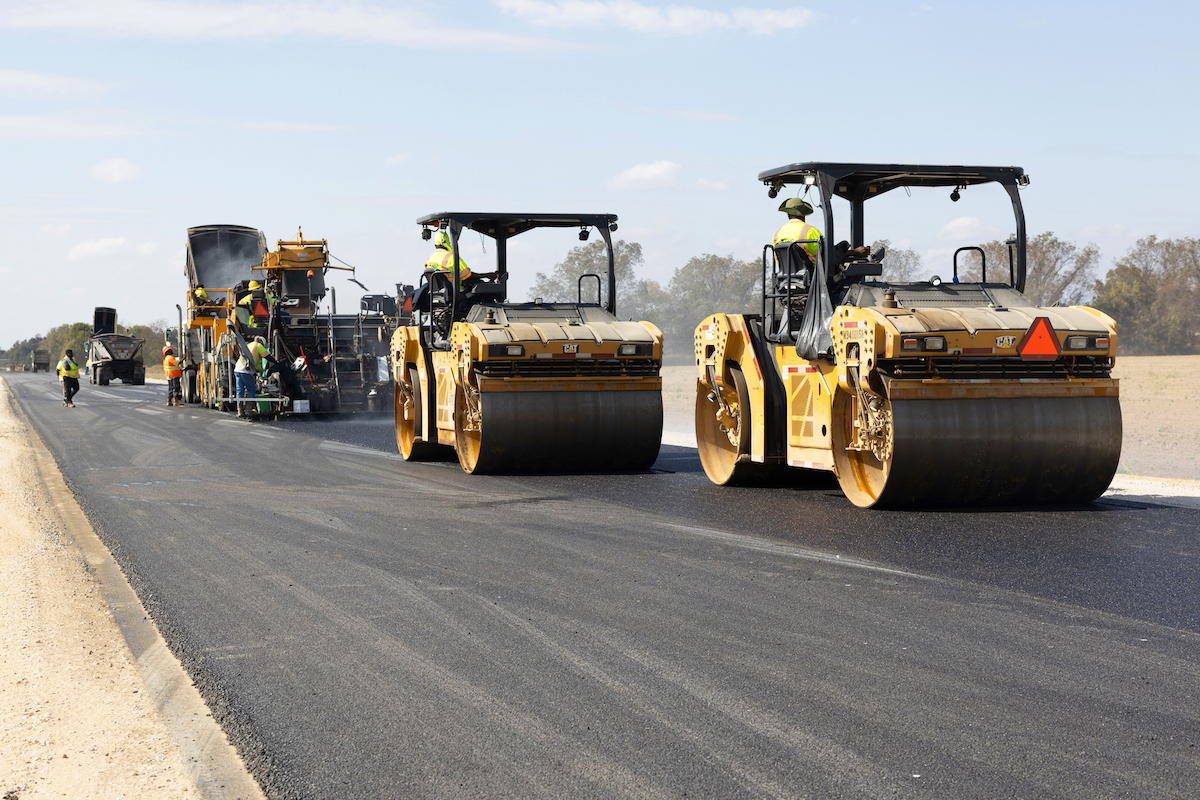“The contractor has multiple crews, the subcontractors have multiple crews, and they’re working all over the project – eastbound and westbound frontage roads, the Sapphire Bay bridge, and the Dalrock flyover,” said Cody Jolley, Project Engineer for the Texas Department of Transportation (TxDOT). “It’s all phased together to help us start switching traffic patterns to the new bridges.”
Scheduled for completion in August 2024, the $142 million Segment 1 project extends from Bass Pro Drive in Garland, Texas, to Dalrock Road in Rockwall, Texas – including across an inlet of Lake Ray Hubbard. The work involves building new, three-lane eastbound and westbound frontage road bridges alongside the existing Lake Ray Hubbard bridge, constructing a new bridge at Bayside Drive/Sapphire Bay, reconstructing the Dalrock Road interchange, modifying ramps, and widening the mainlane pavement structure for more efficient traffic flow and an additional shoulder.
Segments 2 and 3 of the I-30 Expansion and Improvement project will continue adding frontage roads and widening I-30 mainlanes across Lake Ray Hubbard to the Rockwall/Hunt County Line. (See “Finishing the Job” section for details.) TxDOT anticipates finishing the last two segments by 2027.
Funded by the Texas Clear Lanes initiative (with federal and local funds contributing to planning and utility relocations), the I-30 Expansion and Improvement project will reduce traffic congestion caused by the area’s rapid population and commerce growth. With the current configuration, incidents on the lake bridge result in bottlenecks and road closures. The new frontage road bridges and expanded mainlanes will allow traffic to continue across the lake even if an accident affects general-purpose lanes.

| Your local Hitachi dealer |
|---|
| ASCO Equipment |
| CLM Equipment Co |
For the structures’ poured-in-place columns and caps, “Concrete trucks back up to the dock and fill a bucket on a barge,” Jolley said. “Tugboats then push the barge out and the cranes lift the bucket.”
Most of the structures’ 70-ton, prefabricated concrete girders span 130 to 140 feet in length and 6 feet in height.
When the girders arrive onsite, “The trucks drive off the docks onto a Flexifloat barge that was configured into a long runway,” Jolley said. “A tugboat pulls the barge into position, then the guys get out there, rig it up, and lift the beam. After that, they turn the barge around, pull it back to the dock, and the truck drives onto the dock and on its way.”
That process repeats for each girder. “By the time they set a beam, brace it, and release all the rigging, they’ve usually loaded another truck on the barge and are headed back out,” Jolley said.
Instead of lifting the girders from the mainlanes, “This was a way to avoid closing lanes of traffic to get the materials out there,” he added. “The truck drivers were nervous about driving onto the barges at first, but they got used to it and it went really well.”
The girder operation is only one part of complicated coordination across the water. “While we’re installing the beams, we’re also drilling shafts and doing other work with tugboats,” Jolley said.
Across the entire 1.7-mile corridor, Segment 1 incorporates 76,331 feet of concrete sidewall friction and end-bearing drill shafts. Most of them are reinforced, ranging from 18 to 60 inches in diameter. The deepest shaft extends down 110 feet.
“Hundreds of drill shafts are being placed on this project to support bridge structures and retaining walls and to stabilize subgrade,” Jolley said. “It took a lot of planning to make sure we could get to all the drill shafts; there are quite a few very close together.”
The non-native species already infested several other Texas lakes. Because zebra mussels lack natural enemies in this area, they can multiply rapidly and compete with native species for food and space, harming ecosystems and water quality and creating obstacles for boat traffic.
Since the mussels’ microscopic larvae can’t be seen by the naked eye but can travel from one body of water to another on boats, the Texas Parks & Wildlife Department implemented the clean, drain, and dry requirement for public fresh waters across the state. The efforts on this project create an additional coordination step, but protect the long-term health of Lake Ray Hubbard.
As of May 2023, the Segment 1 project remained on schedule. When the entire I-30 Expansion and Improvement project finishes in a few years, the corridor will feature eight mainlanes from Bass Pro Drive to SH 205 and six mainlanes from SH 205 to FM 2642, in addition to the continuous, six-lane frontage roads to help keep traffic moving.
4.5 miles starting at Dalrock Road and extending across Lake Ray Hubbard to SH 205 in Rockwall, Texas. TxDOT awarded the $334 million construction contract to Williams Brothers Construction Co., Inc., headquartered in Houston. They started working in April 2023 to add shoulders, reconstruct, and widen I-30 from six to eight mainlanes; build new frontage road bridges over the lake; reconstruct existing frontage roads; revamp the Horizon Road interchange; and modify ramps.
10.4 miles on land from SH 205 in Rockwall, Texas, to FM 2642 at the Rockwall/Hunt County Line. With an estimated cost of $289 million, TxDOT anticipates awarding the construction contract in late 2023. This segment will reconstruct and widen I-30 from four mainlanes to six, reconstruct and widen frontage roads from four lanes to six, construct new interchanges, reconstruct existing interchanges, and modify ramps.
- 185 columns on the eastbound frontage road bridge
- 166 columns on the westbound frontage road bridge
- 944,176 square feet of bridge deck
- 73,760 square feet of concrete paving
Segment 2 will include:
- 370 columns on the eastbound frontage road bridge
- 368 columns on the westbound frontage road bridge
- Over 1.7 million square feet of bridge deck
Segment 3 will include:
- 9.38 miles of drill shafts
- 372,799 square feet of bridge deck
- 897,220 square feet of concrete paving
Photos courtesy of TxDOT



















